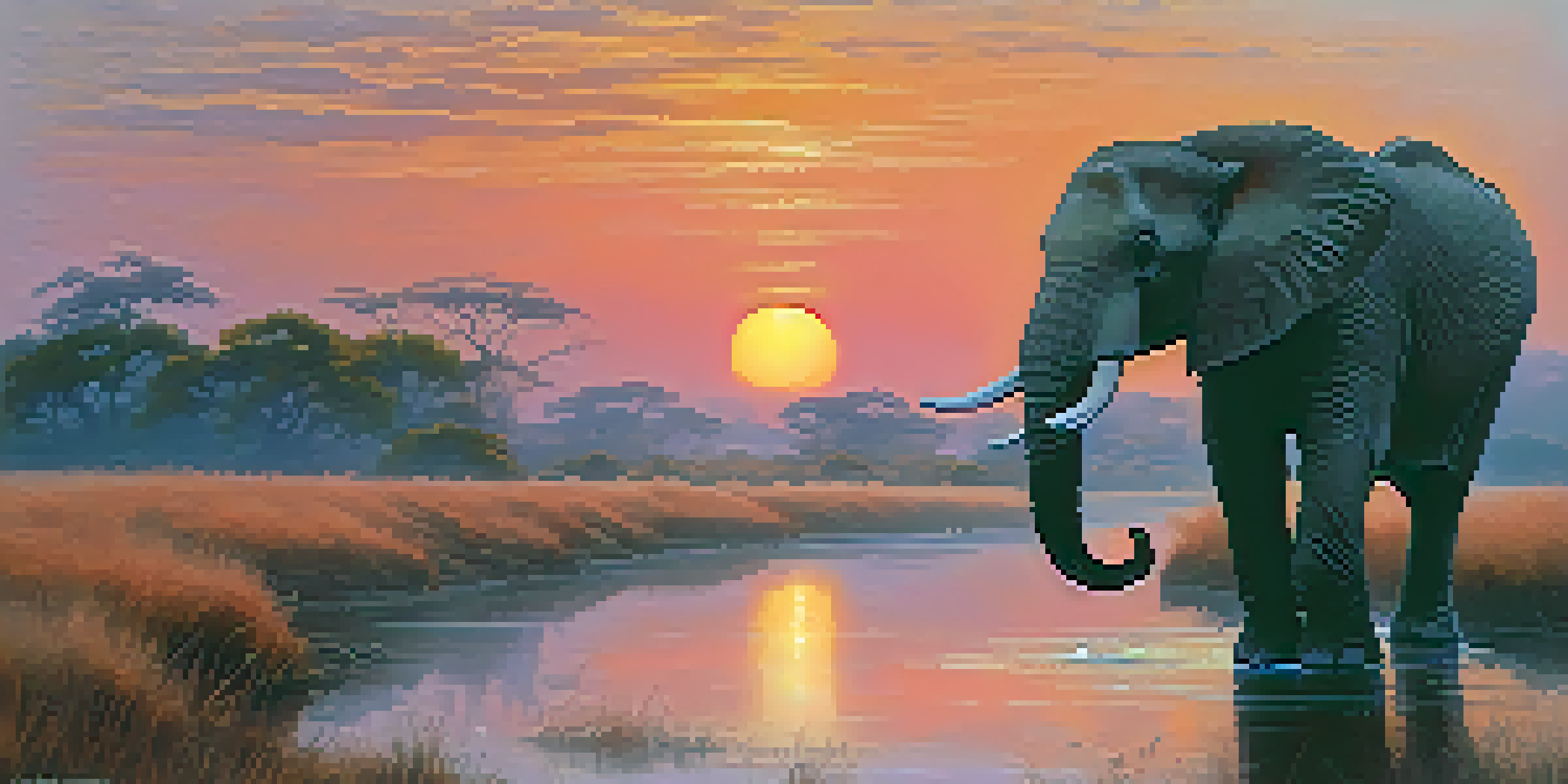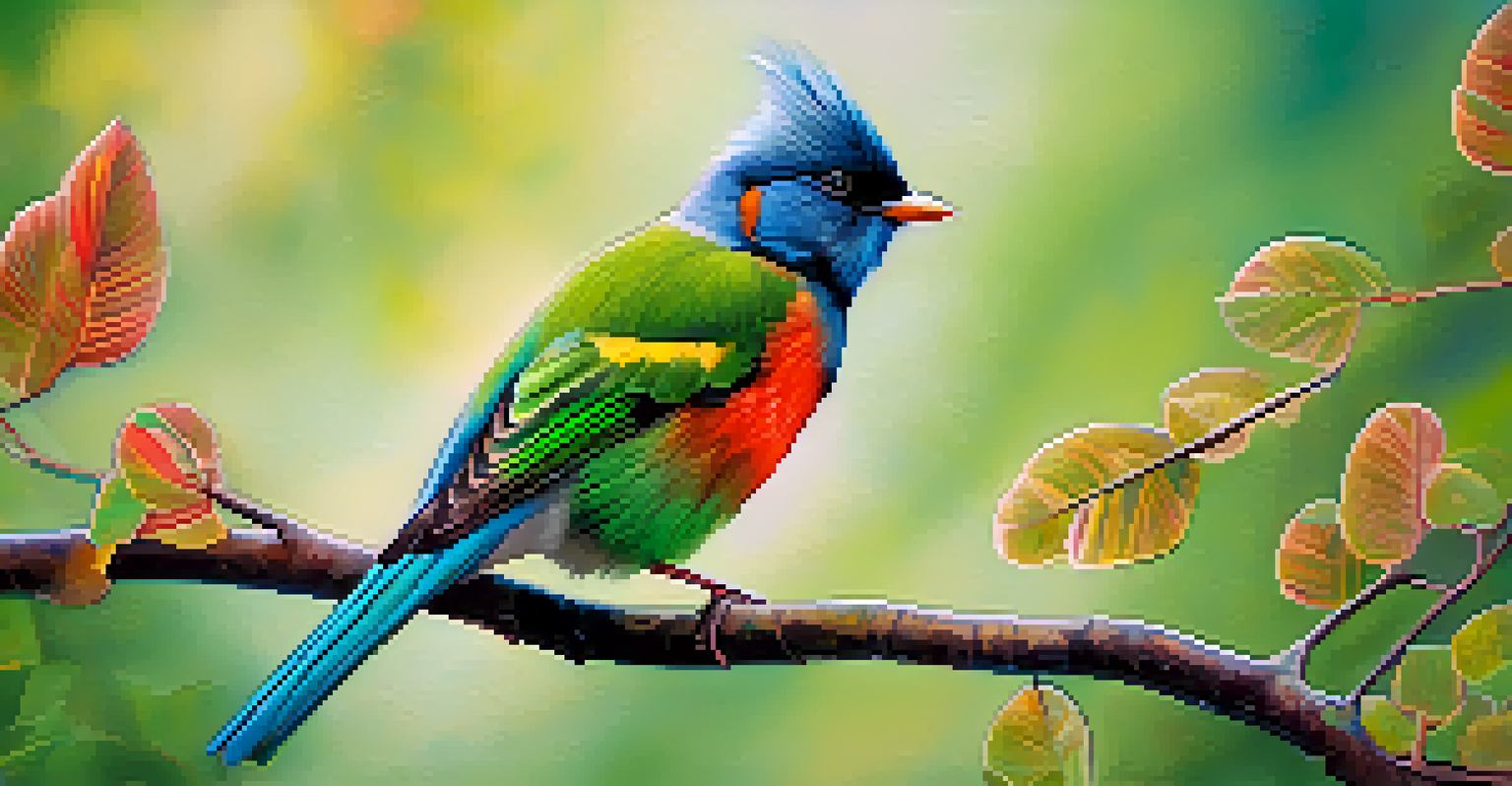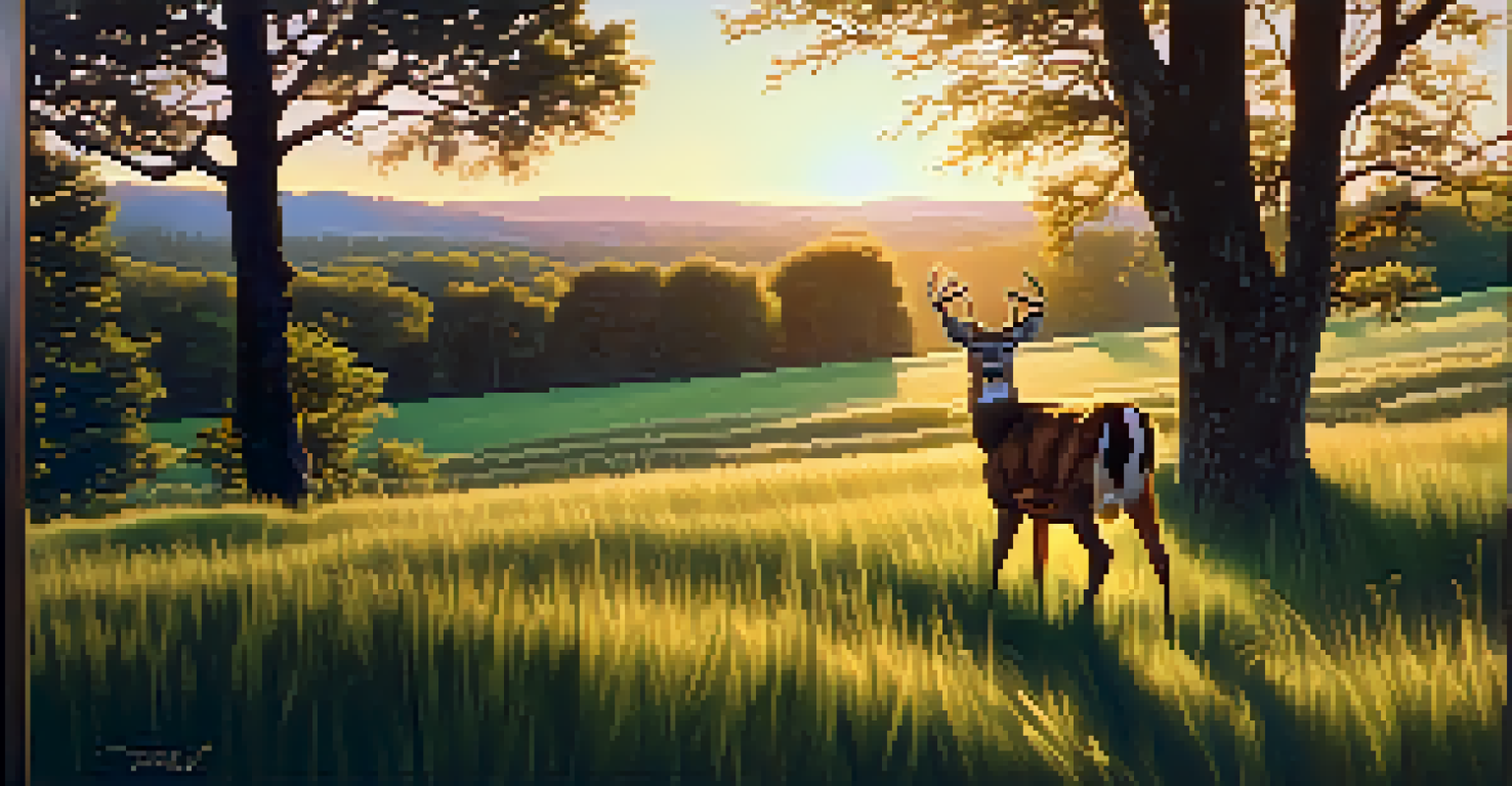Wildlife Photography Techniques in India's National Parks

Understanding Your Camera Settings for Wildlife Shots
Before you venture into the wild, it's crucial to familiarize yourself with your camera settings. Understanding ISO, aperture, and shutter speed can make the difference between a blurry memory and a stunning shot. For instance, a higher ISO allows for shooting in low light conditions, which is often when wildlife is most active.
In every walk with nature one receives far more than he seeks.
Experimenting with aperture settings can also help you achieve that beautiful blurry background, a technique known as bokeh. This makes your subject stand out, capturing the raw beauty of animals in their natural habitat. Additionally, a fast shutter speed is essential for freezing motion, especially when photographing fast-moving animals like leopards or birds.
Remember, practice makes perfect. Spend time adjusting these settings in various lighting conditions before your trip, so you’ll be ready to capture those amazing moments when they arise.
Choosing the Right Lens for Wildlife Photography
Selecting the right lens is a game-changer when it comes to wildlife photography. Telephoto lenses are particularly popular as they allow you to capture distant subjects without disturbing them. For instance, a 300mm lens can help you snap a picture of a deer grazing in the distance, giving you a clear view without getting too close.

Wide-angle lenses, on the other hand, are perfect for capturing the essence of the landscape alongside your wildlife subjects. Imagine photographing a majestic elephant with a vast national park backdrop; a wide-angle lens can enhance that storytelling aspect of your image.
Master Your Camera Settings
Understanding ISO, aperture, and shutter speed is essential for capturing stunning wildlife photos.
Ultimately, the lens you choose should align with your shooting style and the specific wildlife you aim to photograph. Whether it’s a long-range shot or a stunning landscape view, having the right lens is key.
The Importance of Patience in Wildlife Photography
Wildlife photography requires a healthy dose of patience. Unlike a posed portrait, animals don’t always cooperate, and it can take time to get that perfect shot. For example, you may spend hours waiting quietly for a tiger to emerge from the foliage, only to find it’s worth every minute when it finally does.
The camera is an instrument that teaches people how to see without a camera.
This patience not only applies to waiting for the right moment but also to observing animal behavior. Understanding the routines of your subjects—like feeding times or migration patterns—can increase your chances of capturing incredible images.
So, pack a snack, bring a book, and settle in for the long haul. The more time you invest in waiting and watching, the more likely you are to witness those breathtaking moments.
Using Natural Light to Enhance Your Wildlife Photos
Natural light is your best friend in wildlife photography. The golden hour—shortly after sunrise and before sunset—offers soft, diffused lighting that can make your images glow. Shooting during this time can add warmth and depth to your photos, turning an ordinary image into something extraordinary.
Avoid harsh midday sunlight, as it can create strong shadows and overexposed highlights. Instead, plan your shooting schedule around the times when the light is most flattering for your subjects. This will not only improve your images but also create a more enjoyable shooting experience.
Patience is Key in Photography
Taking the time to observe animal behavior and waiting for the right moment can lead to breathtaking shots.
Don't forget to experiment with backlighting, where the light shines from behind your subject. This can create a magical halo effect, especially with animals like birds in flight or insects in the wild.
Mastering Composition for Striking Wildlife Images
Composition is the backbone of any great photograph, and wildlife photography is no exception. Utilizing the rule of thirds can help you create more balanced and visually appealing images. Imagine placing your subject off-center, allowing the viewer’s eye to wander through the entire frame.
Leading lines, such as a winding river or a path through the grass, can guide the viewer’s eyes towards your subject. This technique adds dimension to your photos, making them more engaging and dynamic.
Finally, don’t be afraid to fill the frame with your subject. Close-ups of an animal’s face can convey emotion and tell a powerful story, capturing the essence of the wildlife experience.
Understanding Animal Behavior for Better Shots
Gaining insight into animal behavior can significantly improve your wildlife photography. Each species has its own unique habits, and understanding these can help you anticipate their movements. For example, knowing that certain birds feed at specific times allows you to position yourself for the best shot.
Take the time to research the animals you’re hoping to photograph. Spend a few moments observing them from a distance to learn their patterns and routines. This knowledge not only enhances your photography but also deepens your appreciation for the natural world.
Enhance Photos with Natural Light
Shooting during the golden hour and using natural light creatively can significantly improve the quality of your wildlife images.
Additionally, respecting wildlife behavior is crucial. Always maintain a safe distance and avoid disturbing animals, as this ensures their well-being and allows you to capture more authentic moments.
Post-Processing Techniques to Polish Your Wildlife Photos
Post-processing is where you can truly refine your wildlife images. Software like Adobe Lightroom or Photoshop allows you to adjust exposure, contrast, and color balance, enhancing the final product. For instance, brightening shadows can reveal details that were lost in the original shot.
Don’t overdo it, though—subtlety is key. Aim to retain the natural beauty of your subjects while making sure the colors pop and the details shine. A well-edited photo should look improved but still authentic.

Experiment with cropping to improve composition or remove distractions from the frame. Remember, the goal of post-processing is to enhance your images, making the viewer feel as if they’re right there in the moment with you.